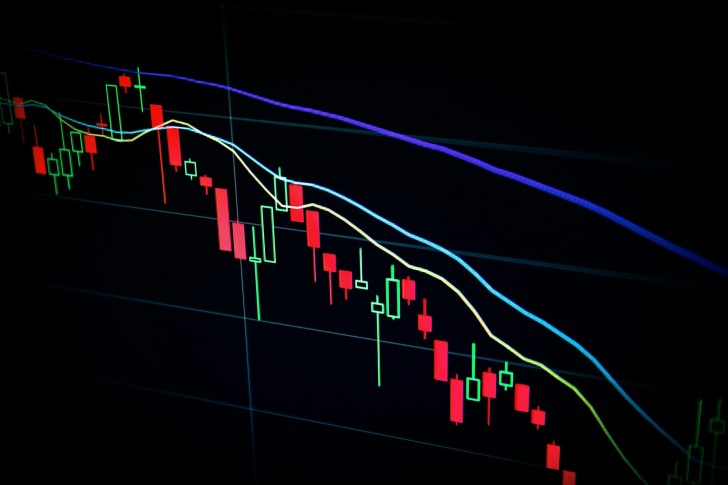It is not only about trading strategy or risk management. The structure of fees set by a reputable forex broker directly influences trading strategy performance.
Selecting a broker with a low and transparent fee model can determine whether small gains accumulate or disappear into overhead.
Hidden Costs of Trading
Trading fees are rarely noticed at first. They appear small in isolation but accumulate over time. For active traders, even fractions of a pip or small commissions compound into thousands in annual costs. Understanding these charges is essential before evaluating performance.
1. Spreads
The spread, or the gap between bid and ask prices, is one of the most common costs. Typical forex spreads vary from 0.1 to 3 pips depending on the broker and market conditions. A seemingly minor difference of 0.5 pips can become significant. For instance, a trader executing 500 trades in a year may face several thousand dollars in additional costs purely due to wider spreads.
2. Commissions
Commissions are often charged per lot, per side, and are unavoidable with certain account types. A 2023 forex market analysis reported average fees of $2 to $7 per 100,000 units traded. For day traders or scalpers placing dozens of trades per week, this fee structure can absorb a large portion of potential profit.
3. Overnight Swap Fees
Holding positions overnight introduces another layer of cost. On average, swap rates amount to approximately 0.5% of the position size per day. Swing traders, who hold trades for weeks, face compounding expenses that reduce the effectiveness of long-term strategies.
4. Other Fees
Non-trading fees also matter. Around 40% of traders reported being unaware of deposit, withdrawal, or inactivity fees until they were charged. These costs quietly reduce available capital and can disrupt money management plans.
Impact of Low-Fee Trading
Low fees extend beyond saving money; they actively shape the profitability curve of a trader’s portfolio. Research confirms that even small cost reductions generate measurable performance gains over time.
1. Compounding Gains
Research by the CFA Institute highlights that reducing trading costs by 10% can increase compounded portfolio returns by 5% over 10 years. This effect stems from reinvestment. Every dollar saved remains in the account, available for future trades, accelerating growth under the rule of 72.
2. Increased Trading Flexibility
Fee-heavy environments restrict traders. Strategies such as scalping or intraday trading become unviable when transaction costs outweigh potential gains. Lower fees expand the range of feasible strategies, allowing traders to adapt to different market conditions without fearing erosion of profit margins.
3. Reduced Psychological Pressure
Costs affect not only the account balance but also trader psychology. Surveys reveal that traders experience 25% less stress when fees are minimal. Reduced cost pressure encourages discipline, reduces overthinking, and supports systematic decision-making.
How to Find a Low-Cost Broker?
The choice of broker determines how much profit a trader retains over time. Fee structures vary widely, and hidden costs often separate profitable traders from those who struggle. Careful evaluation of a broker’s pricing model provides clarity and prevents capital erosion.
Check Spreads in Real Conditions
Published spreads can differ from actual execution. Brokers may advertise spreads “as low as 0.1 pips,” but real spreads often widen during high volatility or low liquidity sessions. Traders should test spreads on a demo or small live account during different market hours to assess the true average cost. Over time, even a consistent 0.2–0.3 pip difference can add thousands in expenses for high-volume traders.
Evaluate Commission Structures
Zero-commission accounts have grown by over 30% between 2022 and 2025, according to Forex Magnates. However, commissions are often shifted into wider spreads in such accounts. Traders should compare both account types, low-spread with commission versus zero-commission, to determine which provides the lowest effective cost for their trading style.
Assess Swap and Financing Rates
Overnight financing fees (swaps) are critical for swing and position traders. Two brokers may charge identical spreads but differ significantly in swap rates, leading to very different long-term costs. A 0.5% daily fee can erode profits quickly if trades are held for weeks. Reviewing swap schedules across multiple instruments helps identify the most cost-efficient option.
Review All Non-Trading Fees
Deposit and withdrawal charges, inactivity penalties, or currency conversion fees are often overlooked. Surveys indicate that around 40% of traders are unaware of these charges until they encounter them. For example, a $30 withdrawal fee on a small account can wipe out an entire week’s profit. Transparency in this area is a strong indicator of broker reliability.
Consider Execution Quality and Slippage
Low posted fees are meaningless if execution is poor. Delayed fills, requotes, or frequent slippage can indirectly increase costs. Traders should analyze execution speed, order fill rates, and independent broker reviews to confirm that advertised costs align with real trading conditions.
Independent Benchmarks and Rankings
Comparative studies regularly show that some brokers consistently fall into the lowest quartile for spreads and commissions on major currency pairs. These external audits provide an unbiased benchmark. Brokers that rank highly in these reports usually combine competitive pricing with transparency, which is an important combination for long-term trust.
Conclusion
Low fees are not secondary considerations, they are core elements of sustainable trading. Spreads, commissions, swap rates, and hidden charges all contribute to whether a trader grows capital or watches it stagnate. Reducing these costs provides measurable benefits: stronger compounding effects, greater strategic flexibility, and reduced psychological strain.
The most practical step traders can take is to audit their current broker’s fee structure. Transparent, low-cost models ensure that profits remain with the trader rather than the intermediary. Choosing carefully is not only about convenience; it is about securing the foundation for long-term trading success.
 Editorial staff
Editorial staff

 Editorial staff
Editorial staff


